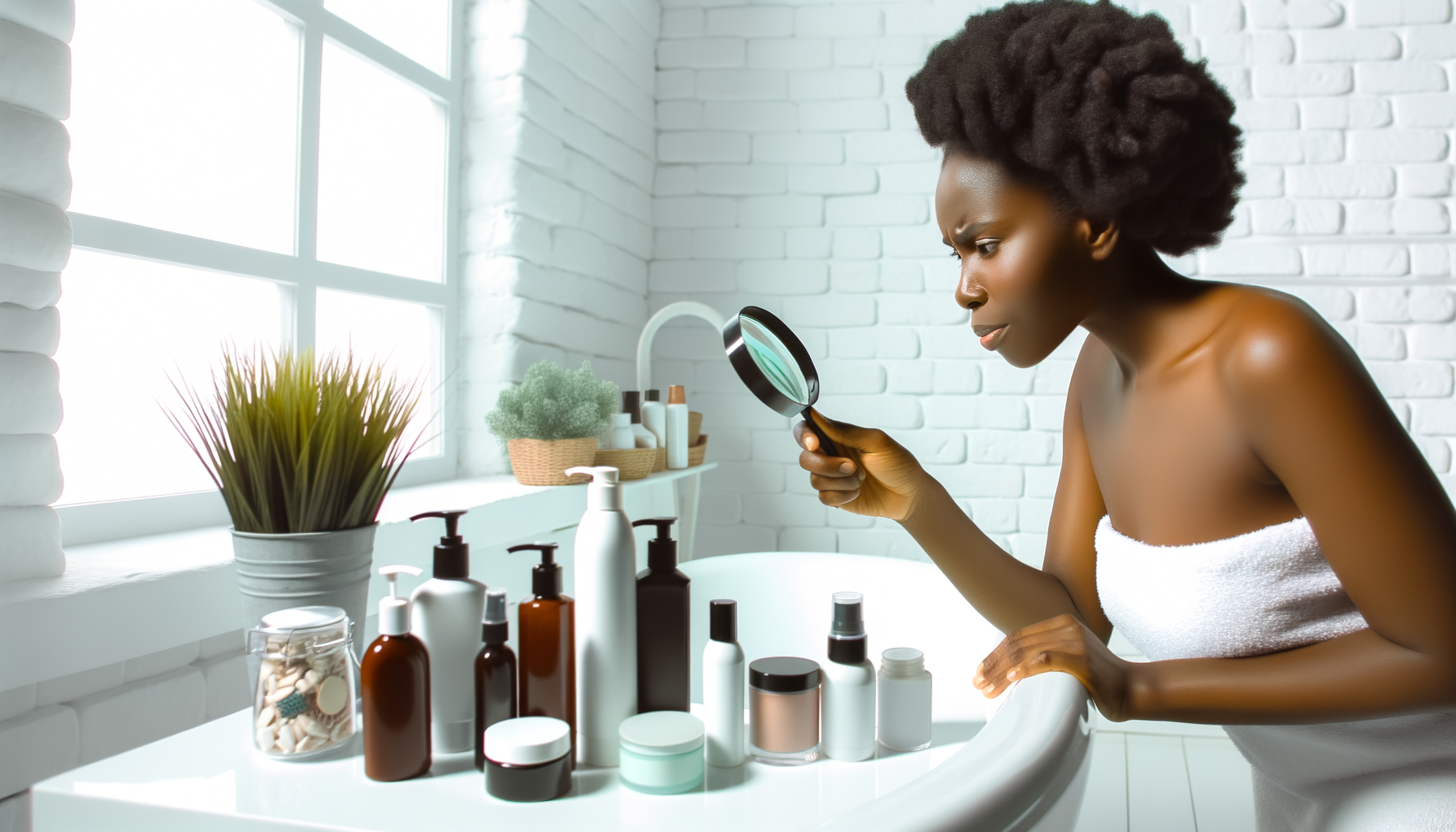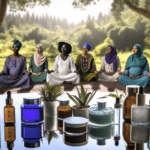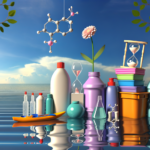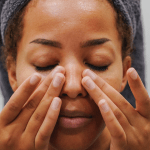Introduction to Endocrine-Disrupting Chemicals (EDCs)
Personal Story and Motivation
It was a routine self-examination that led to the discovery of a lump in my breast. The fear and anxiety that followed were overwhelming. After a series of medical tests, I was diagnosed with multiple benign breast tumors—fibroadenomas. The experience was a wake-up call, and it propelled me to delve into the world of endocrine-disrupting chemicals (EDCs), which I learned could be lurking in the very beauty products I used daily.
Understanding EDCs and Their Sources
EDCs are chemicals that can interfere with endocrine (or hormonal) systems. These disruptions can cause cancerous tumors, birth defects, and other developmental disorders. Found in various household and personal care products, EDCs are more common than we might think. They can be present in plastics, cosmetics, and even the pesticides sprayed on the food we consume.
The Prevalence of EDCs in Beauty Products
Beauty products, from shampoos to makeup, often contain a cocktail of chemicals, some of which are endocrine disruptors. Phthalates, parabens, and triclosan are just a few examples of EDCs that are frequently used in these products for their preservative or performance-enhancing properties.
Health Implications of EDC Exposure
The health implications of exposure to EDCs are far-reaching. Studies have linked these chemicals to a range of health issues, including hormonal imbalances, reproductive problems, and increased risk of certain cancers. The potential for EDCs to affect hormonal function even at low levels of exposure makes understanding and mitigating these risks crucial for our long-term health.

Do you have the most commonly used but toxic, disease bringing chemicals in your skin care? Many chemicals in skincare are hormone disruptors and make menopause symptoms worse.
Find out more…
The Science of Hormones and EDCs
Role of Hormones in the Body
Hormones are the body’s chemical messengers, playing a pivotal role in regulating physiological processes. They are secreted by endocrine glands and travel through the bloodstream to target organs, where they elicit specific responses. Hormones influence growth, metabolism, reproduction, and mood, among other functions. The precise balance and timing of hormone release are crucial for maintaining homeostasis within the body.
How EDCs Affect Hormonal Function
Endocrine-disrupting chemicals (EDCs) can interfere with the normal functioning of the endocrine system in several ways. They may mimic natural hormones, block hormone receptors, alter hormone production, or modify hormone transport across cell membranes. By disrupting the endocrine system’s delicate balance, EDCs can lead to a multitude of health issues, ranging from developmental abnormalities to metabolic disorders.
Specific EDCs Common in Beauty Products
- Phthalates: Often used to enhance the flexibility of plastics in cosmetics, phthalates can affect both estrogen and testosterone receptors.
- Parabens: Used as preservatives, parabens can mimic estrogen and have been detected in human breast tumors.
- Bisphenol A (BPA): Found in some plastic packaging, BPA is known for its estrogenic activity.
- Triclosan: An antimicrobial agent that may disrupt thyroid hormone signaling.
Research Linking EDCs to Health Issues
Scientific research has established connections between exposure to EDCs and a range of health problems. For instance, phthalates have been linked to reproductive disorders and metabolic syndrome. Parabens have been associated with breast cancer due to their estrogenic properties. BPA exposure has been correlated with obesity, diabetes, and cardiovascular diseases. Triclosan has raised concerns over thyroid disruption. The cumulative evidence underscores the need for caution regarding EDCs in consumer products.
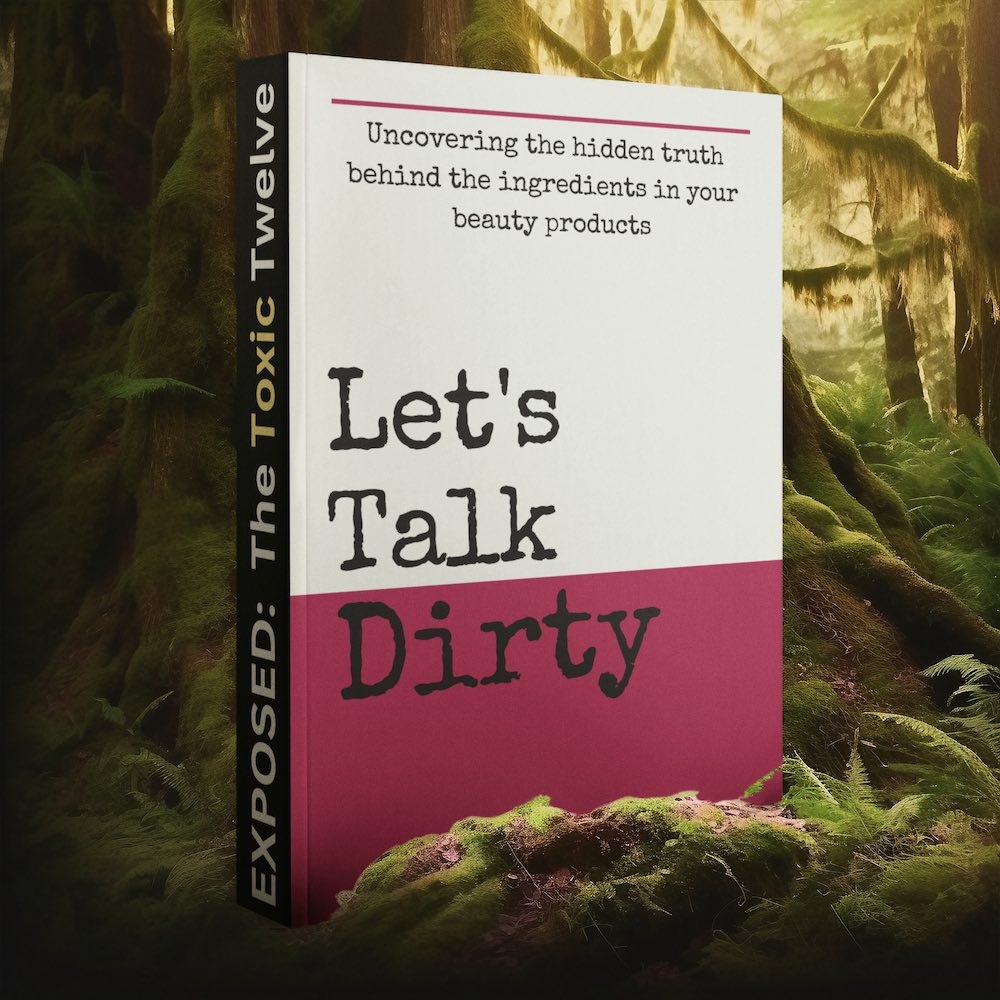
Feeling You Have a Right to Safe Beauty & Fem Care?
If so, it may be time for a change. It starts with knowledge. We have a few suggestions in our new guides.
Navigating the Beauty Industry
The Challenge of Regulation in the Beauty Industry
The beauty industry, a behemoth valued at billions of dollars, operates with surprisingly minimal regulation. The Food, Drug, and Cosmetic Act (FDCA), which has not been significantly updated since 1938, provides the U.S. Food and Drug Administration (FDA) with limited authority over cosmetics. This means that, unlike drugs or medical devices, beauty products can be released without FDA approval. The industry’s self-regulatory body, the Cosmetic Ingredient Review, is funded by cosmetics manufacturers, raising concerns about potential conflicts of interest. As a result, consumers are often left to navigate a marketplace filled with products that may contain harmful chemicals without comprehensive oversight or clear labeling.
Consumer Studies and Their Impact
Consumer studies have played a pivotal role in shedding light on the potential risks associated with beauty products. For instance, the Silent Spring Institute’s POWER study highlighted the disproportionate exposure to endocrine-disrupting chemicals (EDCs) among Black women due to hair care products. These studies have not only informed consumers but also fueled advocacy for more stringent regulations. They underscore the need for transparency and safety in product formulation, pushing for a market that prioritizes consumer health over corporate secrecy.
Disparities in Chemical Exposure Among Different Demographics
Research has revealed troubling disparities in chemical exposure, with certain demographics, particularly women of color, being disproportionately affected. Products targeted at these communities often contain a higher concentration of EDCs and other harmful substances. This unequal exposure is linked to higher rates of hormone-related health issues, such as breast cancer and reproductive disorders. The intersection of product marketing, lack of regulation, and social determinants of health has created a landscape where the most vulnerable populations bear the greatest burden of risk.
In conclusion, navigating the beauty industry requires vigilance and knowledge. Consumers must advocate for transparency and support legislative efforts that aim to close regulatory gaps. By understanding the challenges of regulation, the impact of consumer studies, and the disparities in chemical exposure, individuals can make more informed choices and push for a safer, more equitable beauty industry.
Do you know the three main ways that your body gets in touch with harmful chemicals with everyday products? Knowledge is Power!
The Ultimate Detox Guide will tell you how to lower your exposure to harmful chemicals!

Strategies for Reducing EDC Exposure
Using Trusted Sources to Compare Products
One of the first steps in reducing exposure to endocrine-disrupting chemicals (EDCs) in beauty products is to use trusted sources for product comparison. Organizations like the Environmental Working Group (EWG) provide databases such as Skin Deep, which rates products based on their ingredient safety. The Silent Spring Institute’s Detox Me app offers practical tips for conscious purchasing. By cross-referencing recommendations from these sources, consumers can make more informed decisions and select products with fewer harmful chemicals.
Understanding and Decoding Product Labels
Understanding product labels is crucial in identifying EDCs. However, labels can be complex and not always transparent. To decode them, look for key terms such as “paraben-free,” “phthalate-free,” or “BPA-free.” Be wary of vague terms like “fragrance” or “perfume,” which can hide a cocktail of undisclosed chemicals. Learning the names of common EDCs can help you spot them in the ingredient list and avoid products that contain them.
Avoiding Products with Unspecified Fragrances
Fragrances in beauty products can contain EDCs and other harmful chemicals. Since they are often considered trade secrets, companies are not required to disclose the individual components. To minimize risks, opt for products labeled “fragrance-free” or “unscented.” Be cautious, as even “unscented” products may contain fragrances to neutralize odors without imparting scent. Advocacy for stricter labeling laws is ongoing, but until then, consumer vigilance is key.
Selecting Products Based on Hair and Skin Needs
Choosing beauty products should be based on individual hair and skin needs rather than trends. For example, understanding your hair’s porosity and texture can guide you to products that truly benefit your hair type, reducing the need to experiment with numerous products that may contain harmful chemicals. Prioritize products that cater to your specific needs, and consider natural alternatives that can be just as effective without the risk of EDC exposure.

Doubting chemicals in skincare and femcare? Well done! Choose chemical-free products whenever possible.
DIY Approaches to Natural Beauty Care
Benefits of DIY Beauty Products
Embracing DIY beauty products offers a myriad of benefits, both for your health and the environment. By creating your own beauty treatments, you gain control over the ingredients, ensuring that you’re using substances that are safe and beneficial for your skin and hair. This approach allows you to avoid endocrine-disrupting chemicals (EDCs) commonly found in commercial products. Moreover, DIY beauty care is often more cost-effective and eco-friendly, as it reduces the need for plastic packaging and supports a sustainable lifestyle.
Simple and Effective Natural Ingredients
When it comes to natural ingredients, simplicity is key. Many effective beauty remedies can be created with items that you may already have in your kitchen. For instance, raw honey is known for its antibacterial properties, making it excellent for acne treatment and skin hydration. Coconut oil is a versatile ingredient that can be used as a moisturizer, hair conditioner, or makeup remover. Apple cider vinegar can help balance the pH of your skin and scalp, while oats can soothe and reduce inflammation. These ingredients are not only effective but also safe for most skin types, and they don’t carry the risks associated with synthetic additives.
Recipes for Homemade Hair and Skin Treatments
Creating your own hair and skin treatments is not only fun but also a great way to ensure you’re nourishing your body with safe, natural ingredients. Here are a few simple recipes to get you started:
- Moisturizing Avocado Hair Mask: Mash one ripe avocado and mix it with two tablespoons of coconut oil and one tablespoon of honey. Apply to damp hair, leave on for 20 minutes, then rinse thoroughly.
- Gentle Oatmeal Face Scrub: Combine two tablespoons of ground oats with one tablespoon of honey and a dash of water to create a paste. Gently massage onto your face in circular motions, then rinse with warm water.
- Refreshing Cucumber Toner: Puree one cucumber and strain the juice. Mix with equal parts of witch hazel or rose water. Apply to the skin with a cotton pad for a refreshing and soothing effect.
These DIY treatments can be customized to suit your specific skin and hair needs, and they’re free from the questionable chemicals found in many store-bought products. By incorporating these natural remedies into your beauty routine, you can take a significant step towards reducing your exposure to harmful substances and promoting a healthier lifestyle.

Common chemicals can hurt your gut health, your skin health, your mental health, and immune system.
Do you know the three main ways that your body gets in touch with harmful chemicals?
Knowledge is Power!
The Ultimate Detox Guide will tell you how to lower your exposure to harmful chemicals!
The Need for Stronger Cosmetic Regulations
Historical Context of Cosmetic Regulation
The regulation of cosmetics in the United States has a storied past, with the earliest significant legislation being the Federal Food, Drug, and Cosmetic Act (FDCA) of 1938. This act was a response to public outcry over dangerous products, including cosmetics, that had caused harm to consumers. The FDCA granted the U.S. Food and Drug Administration (FDA) authority to oversee the safety of cosmetics, among other products. However, the act did not require pre-market approval for cosmetics, which has led to ongoing challenges in ensuring product safety.
Current Regulatory Gaps and Challenges
Despite the FDCA, the cosmetic industry remains one of the least regulated sectors in the U.S. The FDA does not have the power to mandate recalls of harmful cosmetics, and the agency is not required to review ingredients or products before they hit the market, except for color additives. This lack of regulation has resulted in a market where potentially harmful ingredients can be included in beauty products without thorough safety assessments. Furthermore, the FDA’s Office of Cosmetics and Colors is under-resourced, limiting its ability to effectively monitor the industry.
Advocacy and Legislative Efforts for Safer Beauty Products
In recent years, there has been a push from consumer advocacy groups, researchers, and some lawmakers to strengthen regulations on cosmetics. Efforts have included proposed legislation such as the Personal Care Products Safety Act, which aims to give the FDA more authority over cosmetic safety, including the power to recall dangerous products. Advocacy groups have also been instrumental in raising awareness about the risks associated with certain chemicals used in beauty products and pushing for more transparency and safety in the industry.
The Role of Consumers and Advocacy in Shaping Policy
Consumer advocacy has played a crucial role in driving demand for safer beauty products and more stringent regulations. Educated consumers are increasingly seeking out products with safer ingredients and supporting companies that prioritize transparency. This consumer shift has put pressure on the industry and policymakers to respond. Advocacy groups have also been pivotal in lobbying for legislative change and conducting independent research to highlight the need for reform.
In conclusion, while the historical context of cosmetic regulation in the U.S. has set a foundation for product safety, current regulatory gaps pose significant challenges. Advocacy and legislative efforts are crucial in the push for stronger regulations, and consumers have a powerful role to play in advocating for safer beauty products. The future of cosmetic safety hinges on the combined efforts of informed consumers, advocacy groups, and responsive policymakers.
Conclusion: Empowerment Through Knowledge and Action
The Importance of Ongoing Research and Education
As consumers, we are increasingly aware of the potential risks associated with the chemicals in our beauty products. However, knowledge is power, and ongoing research and education are critical in understanding these risks and how to mitigate them. It is essential to stay informed about the latest scientific findings on endocrine-disrupting chemicals (EDCs) and their impact on health. By doing so, we can make more informed decisions about the products we use daily. Advocacy groups, academic institutions, and regulatory bodies must continue to disseminate their findings to the public, ensuring that everyone has access to the information necessary to protect their health.
Making Informed Choices for Healthier Beauty Routines
Empowerment in the realm of beauty and personal care comes from making informed choices. Consumers should seek out trusted sources that compare products based on their safety profiles. Understanding product labels is crucial; learning to identify and avoid harmful ingredients can significantly reduce exposure to risky chemicals. Opting for products without unspecified fragrances and selecting items that cater to specific hair and skin needs can also minimize the risk of contact with EDCs. Ultimately, healthier beauty routines are within reach when consumers are equipped with the right knowledge and tools.
The Future of Beauty Products and Consumer Safety
The future of beauty products lies in the hands of both consumers and industry regulators. As we move forward, there is a growing need for stronger cosmetic regulations that close current gaps and address the challenges posed by EDCs. Consumers play a pivotal role in this process; by advocating for safer products and supporting legislative efforts, they can drive the industry towards more stringent safety standards. The beauty industry must also rise to the challenge, prioritizing consumer safety and transparency. With concerted efforts from all stakeholders, the future can hold a market where beauty products are not only effective but also free from risky chemicals.

